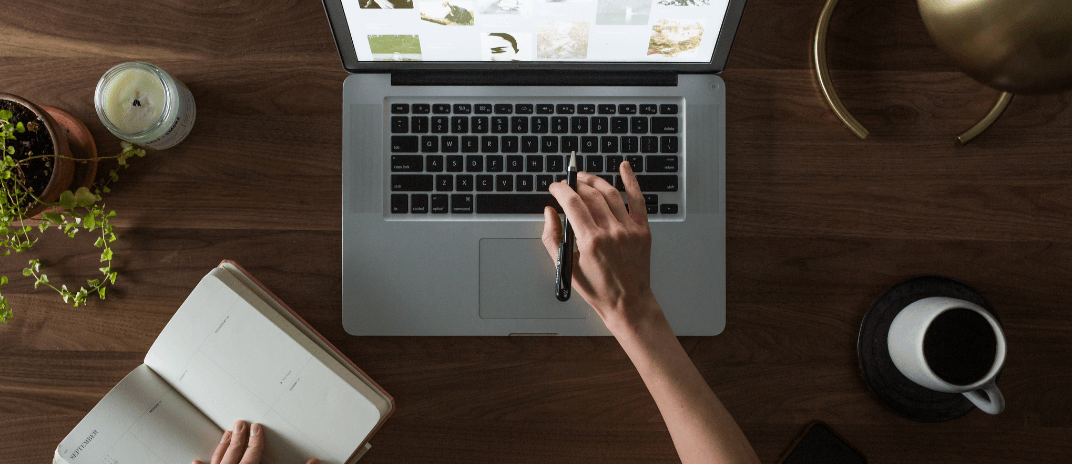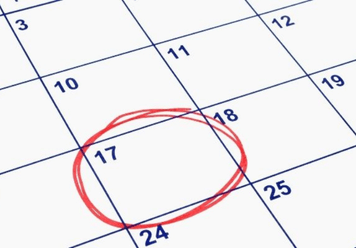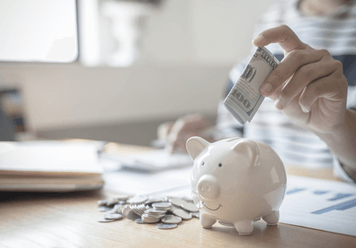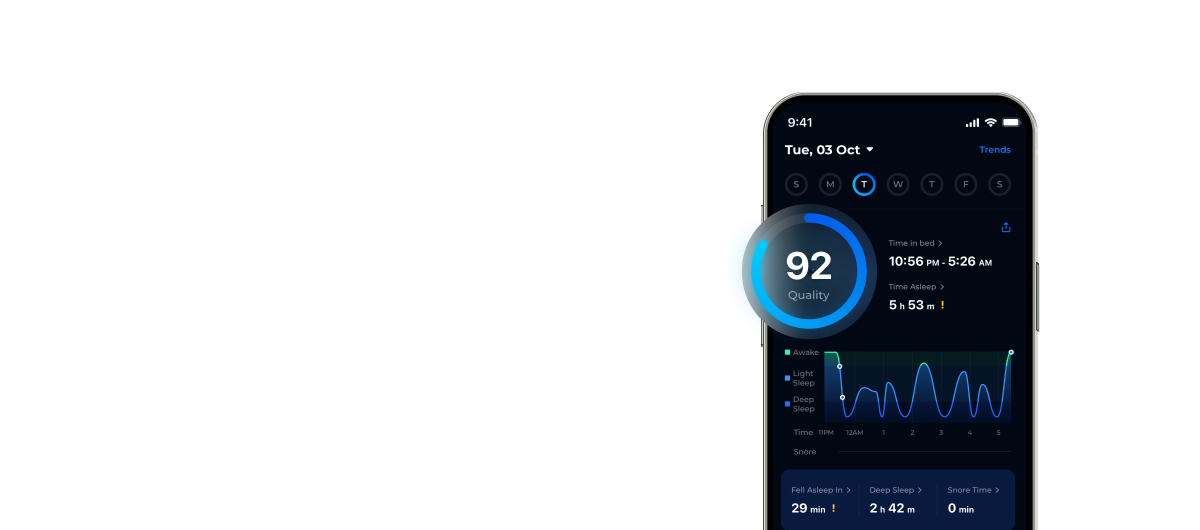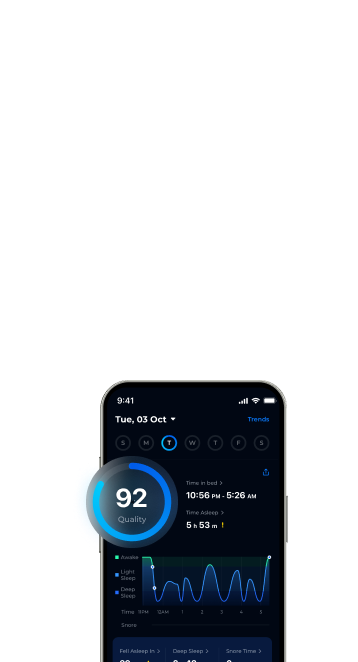Using a printable daily planner is becoming more and more popular for a reason: it’s a great way to manage your time and be productive. Are you thinking about getting a planner? Or maybe you already have one but you’re not sure you want to continue? Just keep reading then! Let me remind you about all the benefits of using a printable daily planner.
Do Daily Planners Help?
It’s critical to be organised when you have a hectic schedule. Only a few people have the mental capacity to balance the demands of work, family, and social life. You’ll need a printable daily planner for this. The following are six reasons why.
Maintain effective schedules
Scheduling is an important aspect of time management. Prioritize and plan your tasks before you start working on them to get the greatest outcomes. You may guarantee that you are properly prepared for these occasions by using a daily planner to set the exact time for professional duties, personal errands, appointments, and so on.
Enhance your productivity
Your productivity has an impact on both your career and personal lives. Being very productive at work allows you to complete assignments and projects on schedule. You won’t be burdened by chores and other household responsibilities if you’re productive at home. A daily planner allows you to remain on top of duties at work and at home by neatly organising them.
Manage your stress levels
From time to time, we all feel the effects of stress. A rigorous schedule that consumes you physically and emotionally is one of the most common causes of stress. Your daily planner assists you in planning crucial tasks so that you don’t have to worry about not meeting your obligations.
Enjoy many health benefits
A daily planner can be used to track and schedule your diet, sleep, and exercise. When you schedule time to spend outside, you’ll get lots of vitamin D and fresh air. Make use of some of the planner’s pages for daily journaling, which may be quite therapeutic.
Exercise your creativity
Setting a solid plan for all of your compulsory activities at work and at home can help you find time for creative pursuits like learning a new skill or taking up a hobby. By adding decorative elements such as photographs, paintings, and stickers to the daily planner itself, you may express your creativity.
Maintain reliable records
Many productive people kept track of notes, appointments, and tasks in their daily planners. Check your daily planner, for example, if you can’t recall when you last evaluated one of your major goals. You can also keep track of how long it has been since you last saw a family member or close friend.
You may want to also check out this article on How to Use a Self-care Planner.
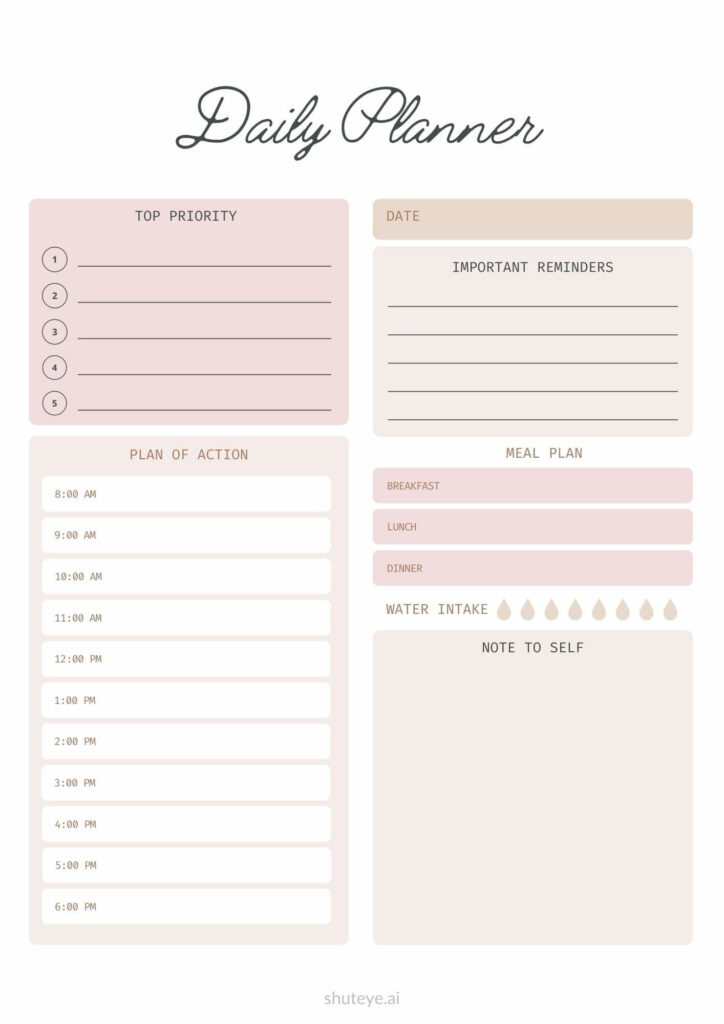
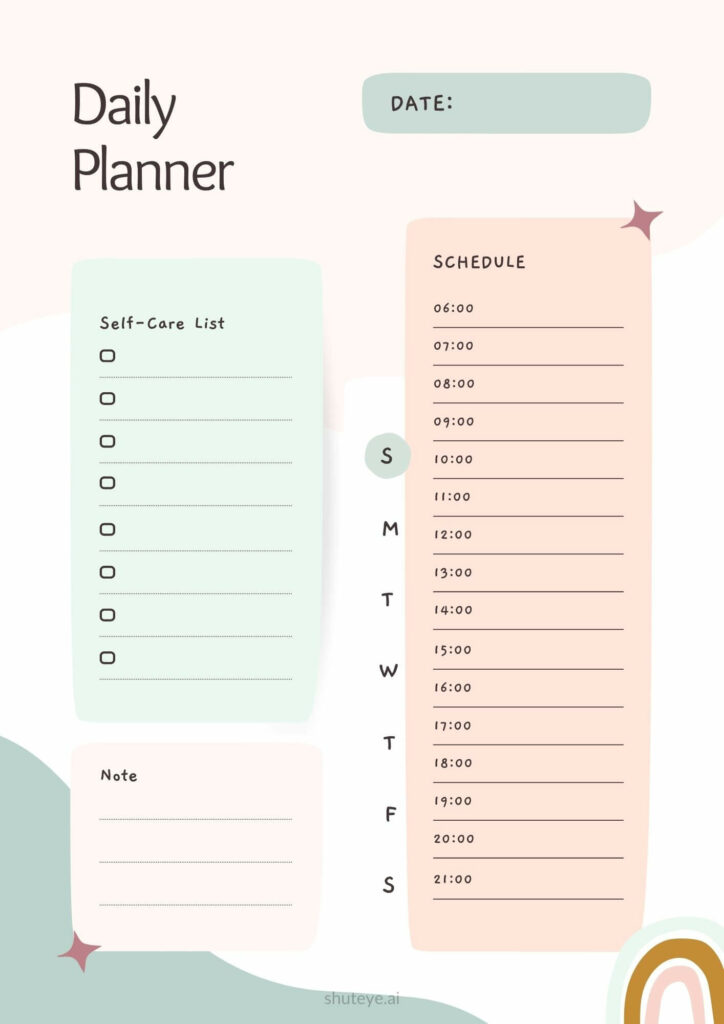
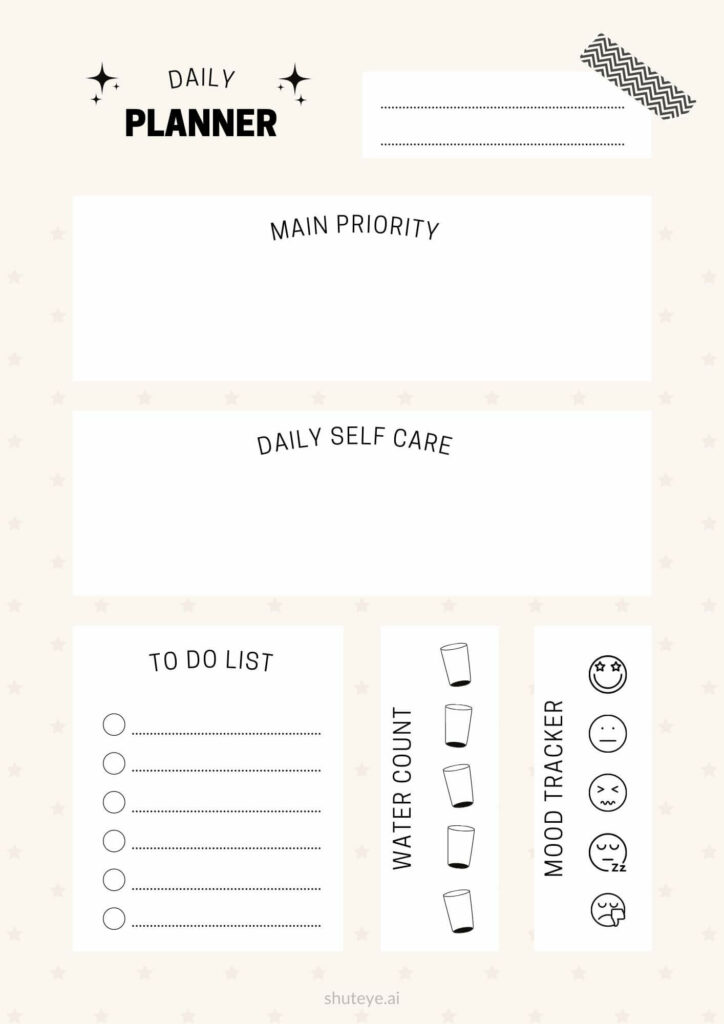
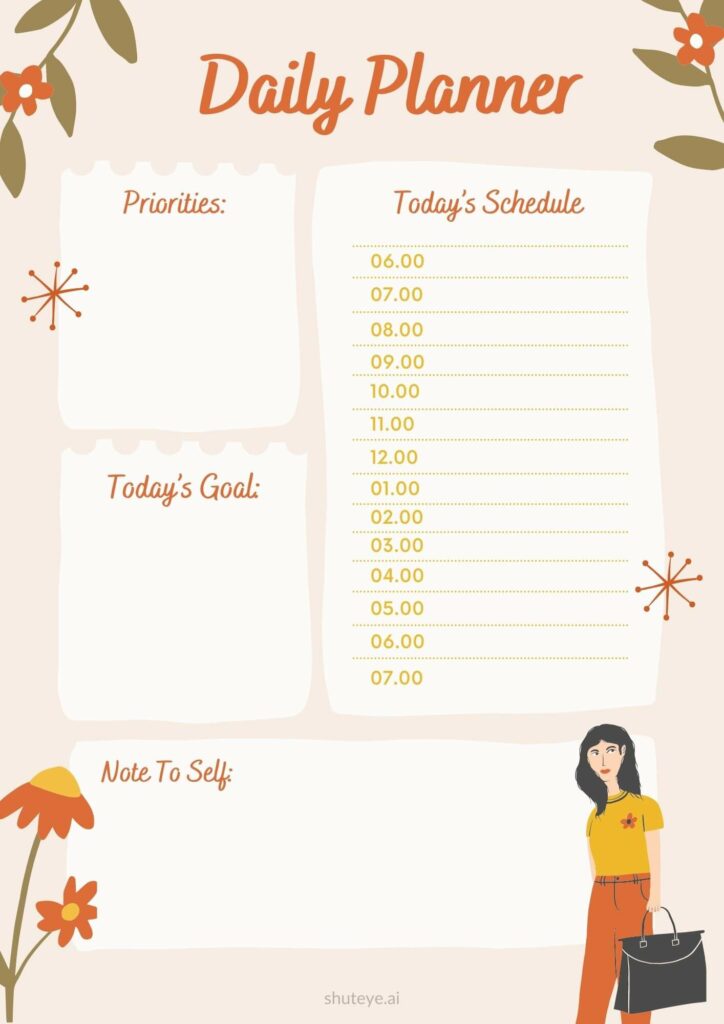
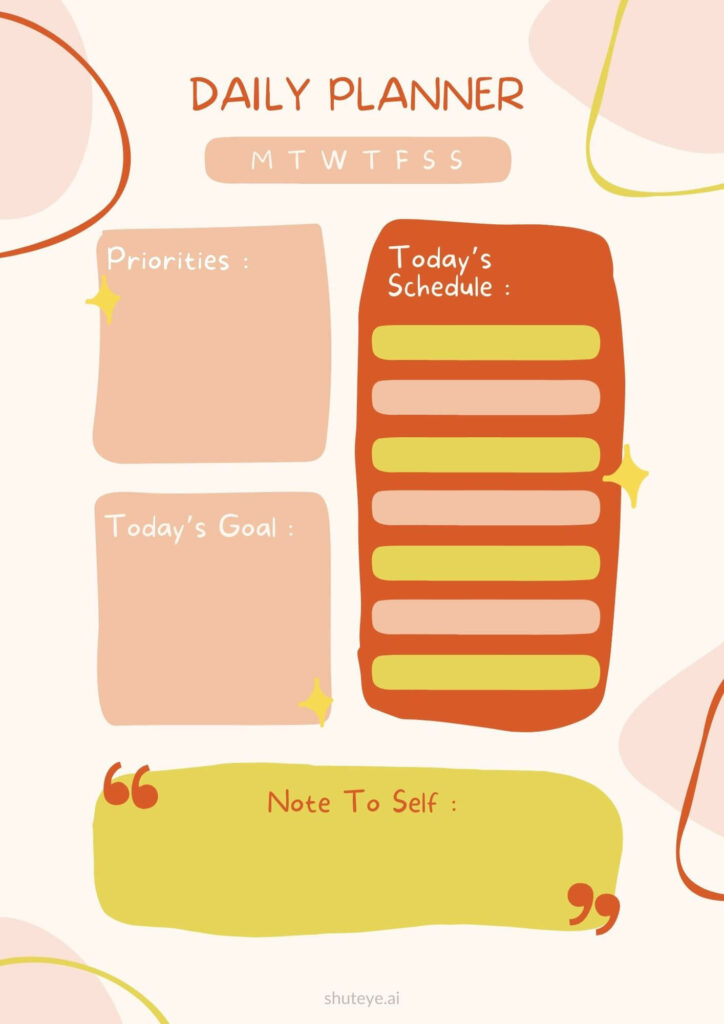
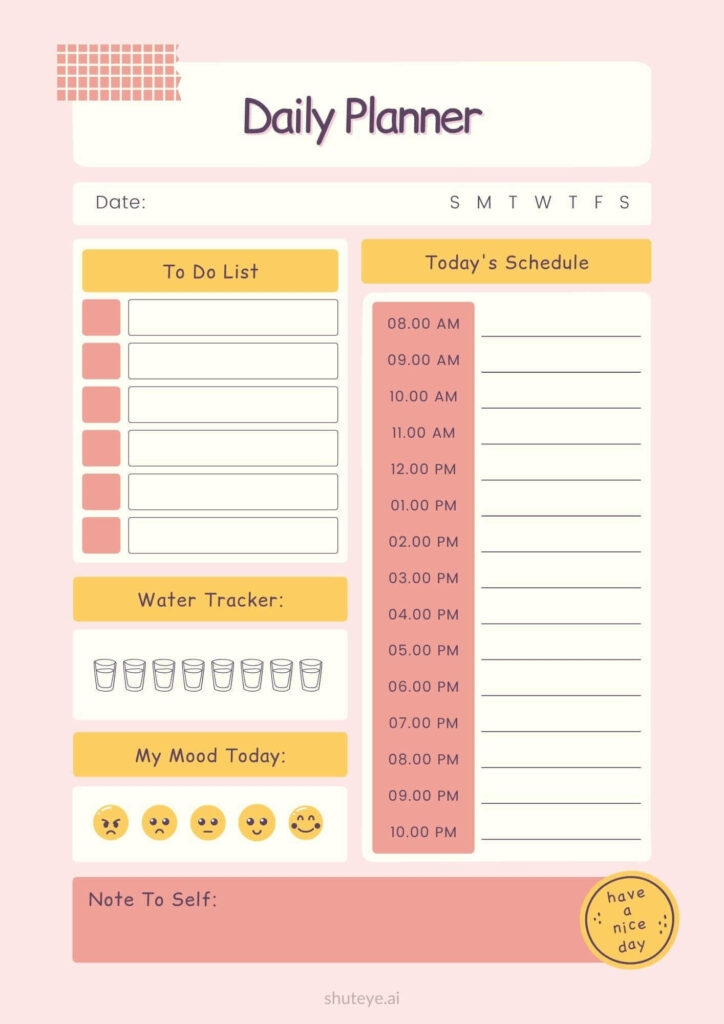
How Do I Make a Daily Planner?
Habits are simpler to form when we can see the immediate benefits of our efforts. Fortunately, making a habit of arranging your day pays benefits right away. With a strategy for the hours ahead, you’ll feel more organised, focused, and inspired. Planning your day will become second nature with time.
It’s one thing to make daily planning a habit. Another thing to consider is whether your printable daily planner is genuinely moving you closer to your larger objectives. Make sure your daily responsibilities are aligned with your long-term goals during your daily planning session. To go there, follow these steps:
Step 1: Break down your big goals
Divide your objectives into daily chores. You can’t put “Get in shape” on your daily to-do list, but you can put “spend 30 minutes on my Peloton” or “take a midnight stroll” on it. When you sit down to organise your day, think about your personal and professional goals, and add things that will help you achieve both.
Step 2: Look at your week as a whole
Br Considering your week as a whole is the first step in planning your day. You probably have several objectives, a variety of possible tasks to achieve them, and only so many hours in the day. That’s OK. While everyday action is beneficial for some goals, working on them a few times a week can help you gain momentum.
On some days, you might want to task batch and concentrate just on tasks connected to a single professional aim. You might also stack your personal goal tasks over the weekend. Zoom out and gently sketch your week on Sunday evening or Monday morning so you know which goals you’ll focus on and on which days. Keep the specifics in mind for your daily brainstorming sessions.
Step 3: Add your have-to-do tasks last
When most people organise their days, they begin with this step. They start with their scheduled appointments, necessary meetings, and pressing deadlines, then try to squeeze goal-oriented chores in between. Consider deferring this step until the conclusion. You’ll be forced to fit your must-do duties around your goal tasks rather than the other way around this way.
In an ideal world, we would only focus on everyday chores that help us achieve our long-term objectives. In reality, we have responsibilities and commitments to meet, some of which have no bearing on our personal or professional development. Reevaluate recurring meetings, consider distributing responsibility, and get comfortable saying “no” to as many commitments and obligations as feasible.
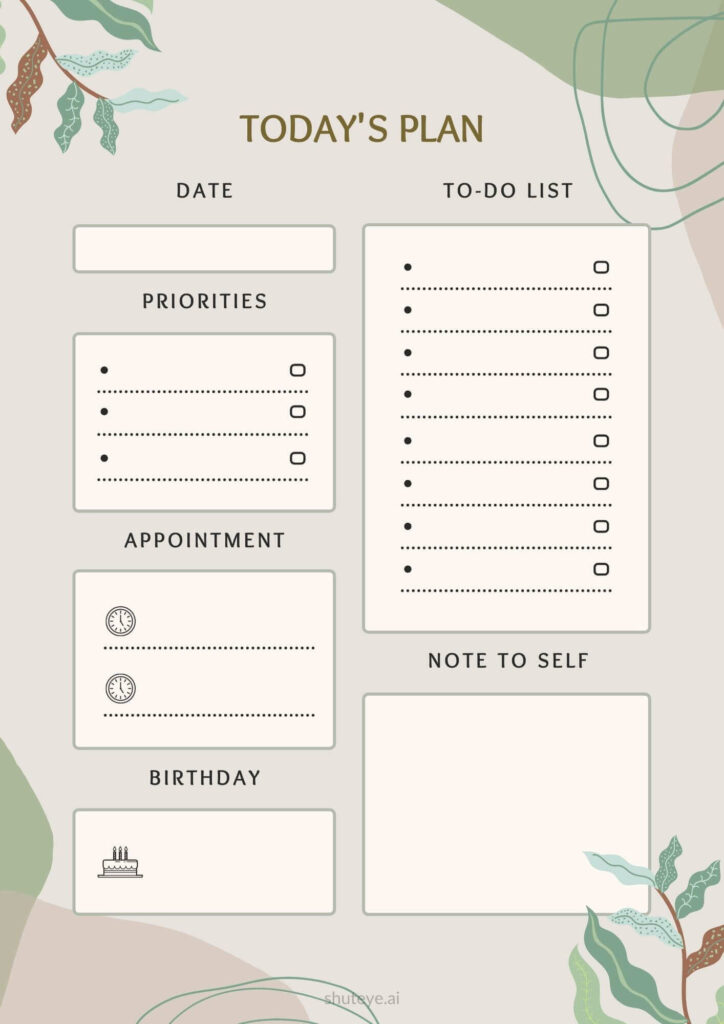
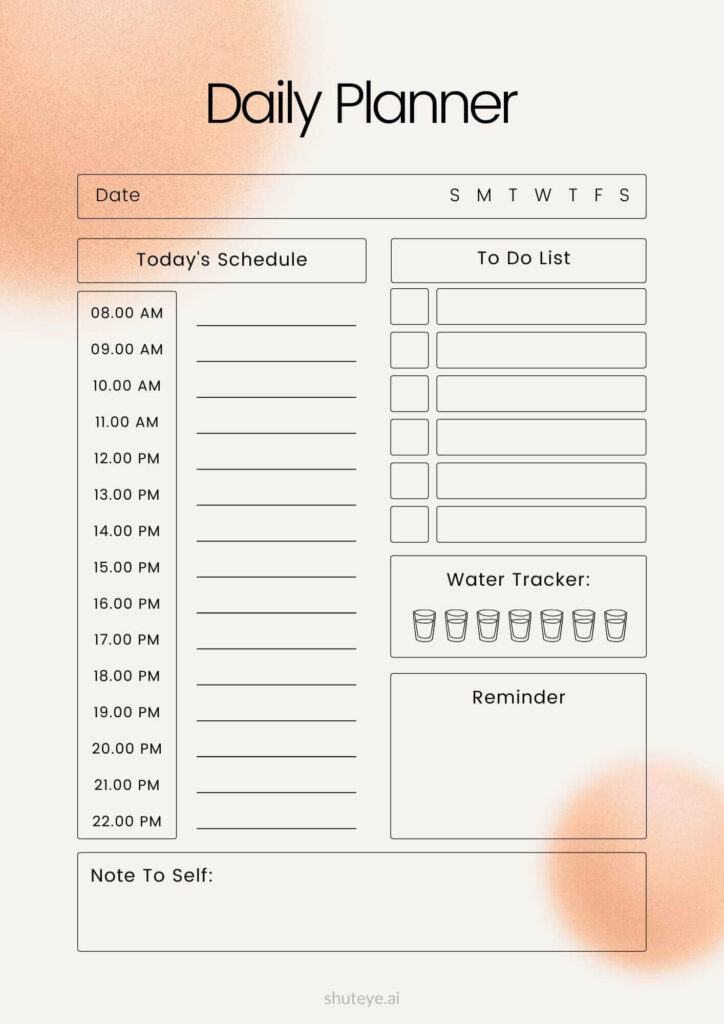
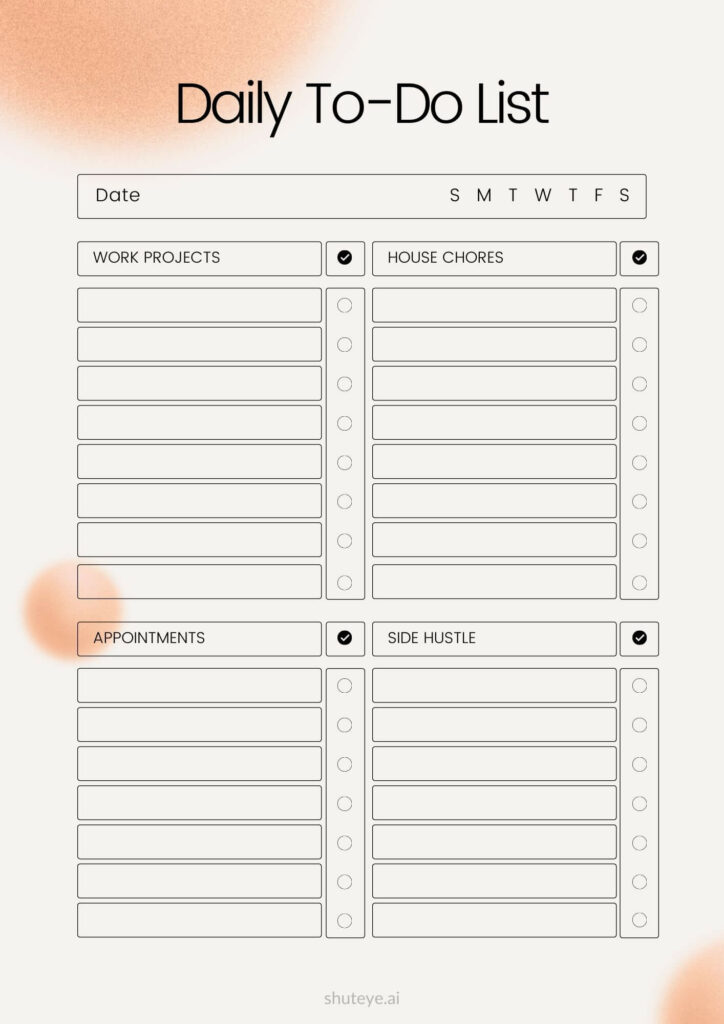
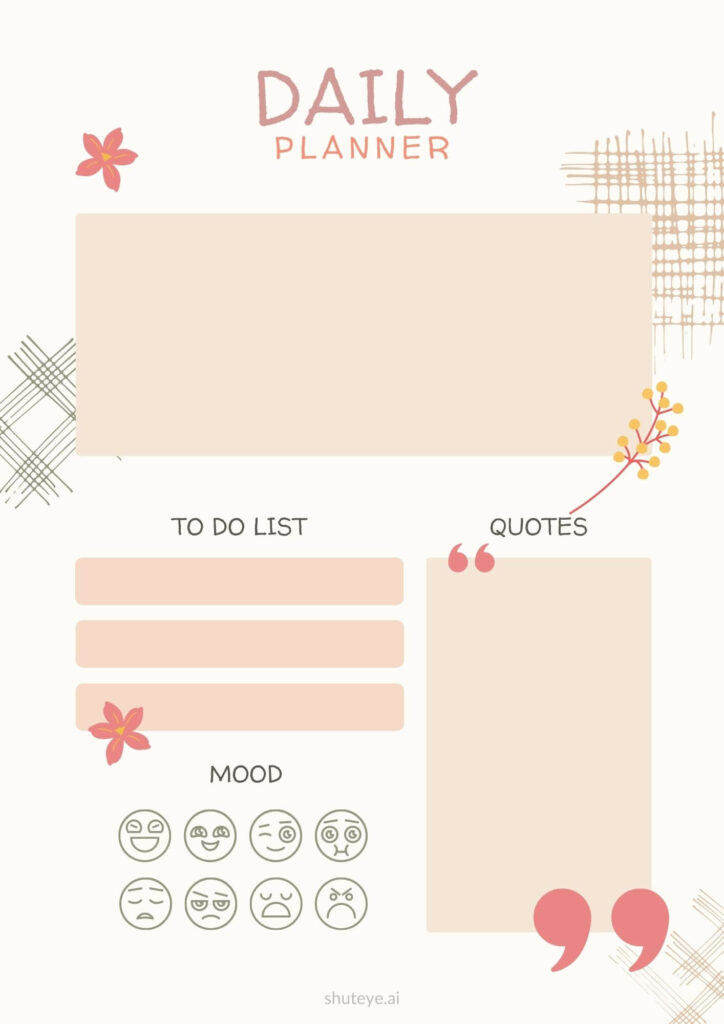
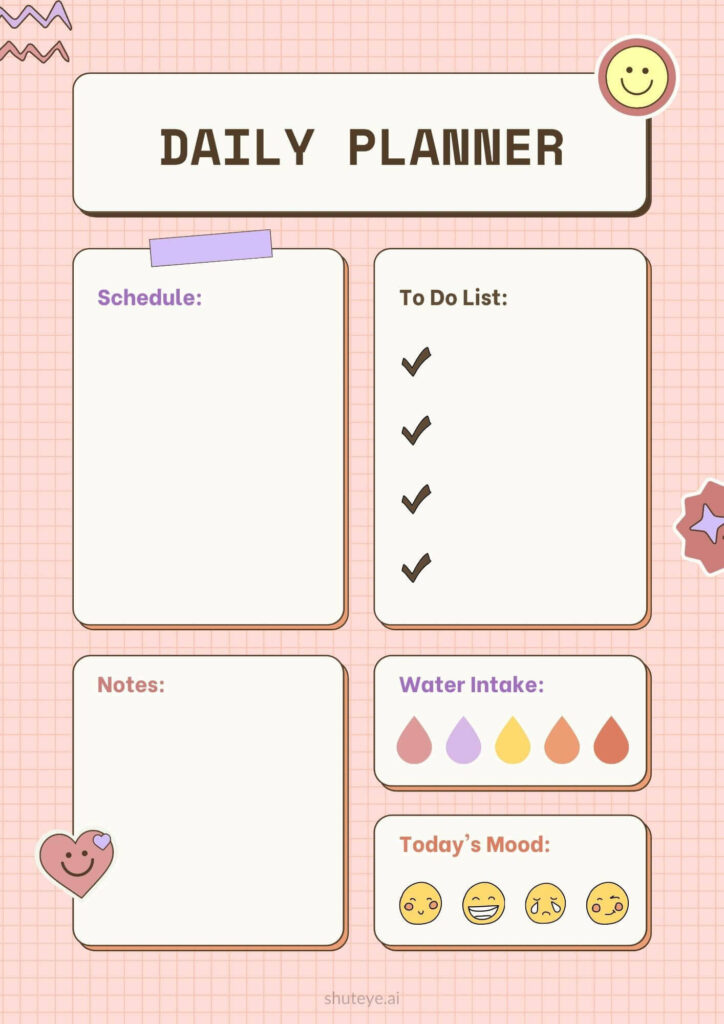
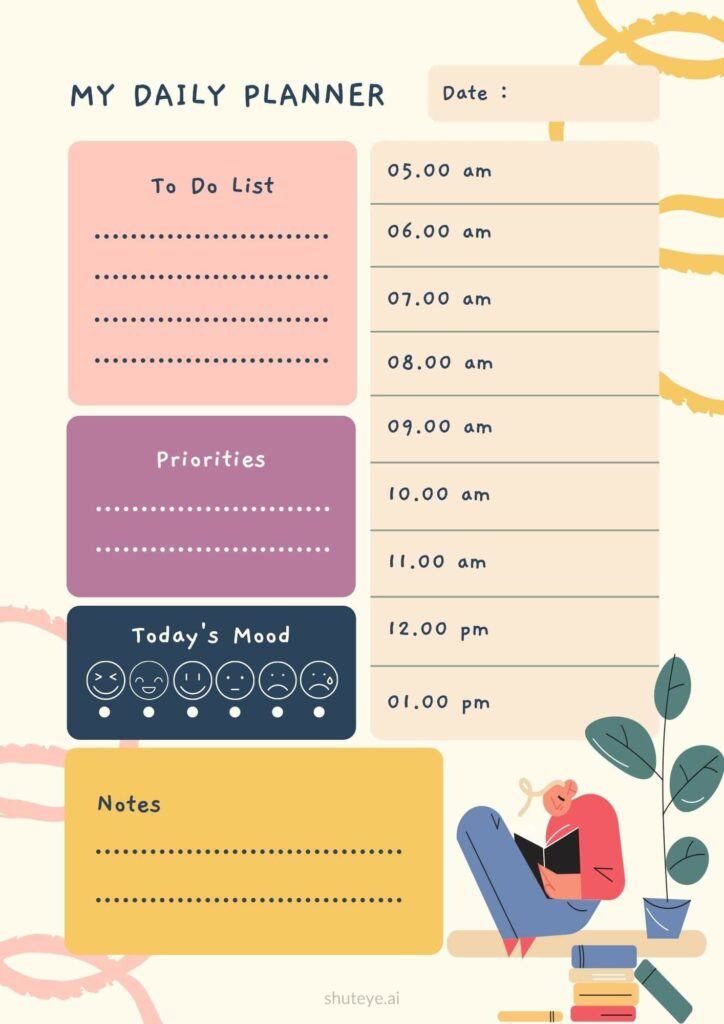
What Is A Good Daily Planner?
Printable daily planners are available in a range of styles, ranging from high-performance planners for those who thrive on leveraging popular productivity strategies to academic planners for students to manage assignments and accomplish study goals. The most essential thing to remember when you learn more about the best printable daily planner is that you are the final expert on the styles and approaches you’ll want to apply.
Choosing how to spend your time ahead of time should make you feel more driven and confident, rather than just one more obligation.
Things To Look For When Choosing a Printable Daily Planner
- Select a planner size. Make sure you have adequate space to record all of the data you require. Don’t be scared to get a larger planner because it will most likely be kept at your desk.
- Choose a planner that includes daily views, and check the next bullet point for more information.
- Consider all of the items you’ll include in your planner. Then write a list of everything you need. When you go to buy a planner, you’ll find it easy to sort through the possibilities and find one that suits your needs.
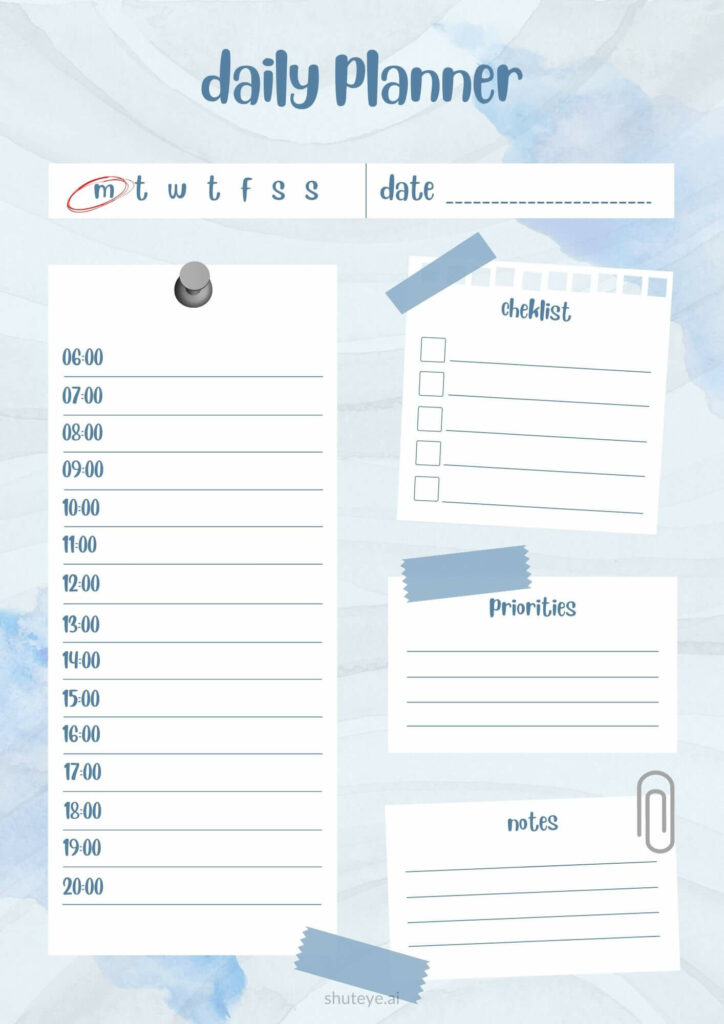
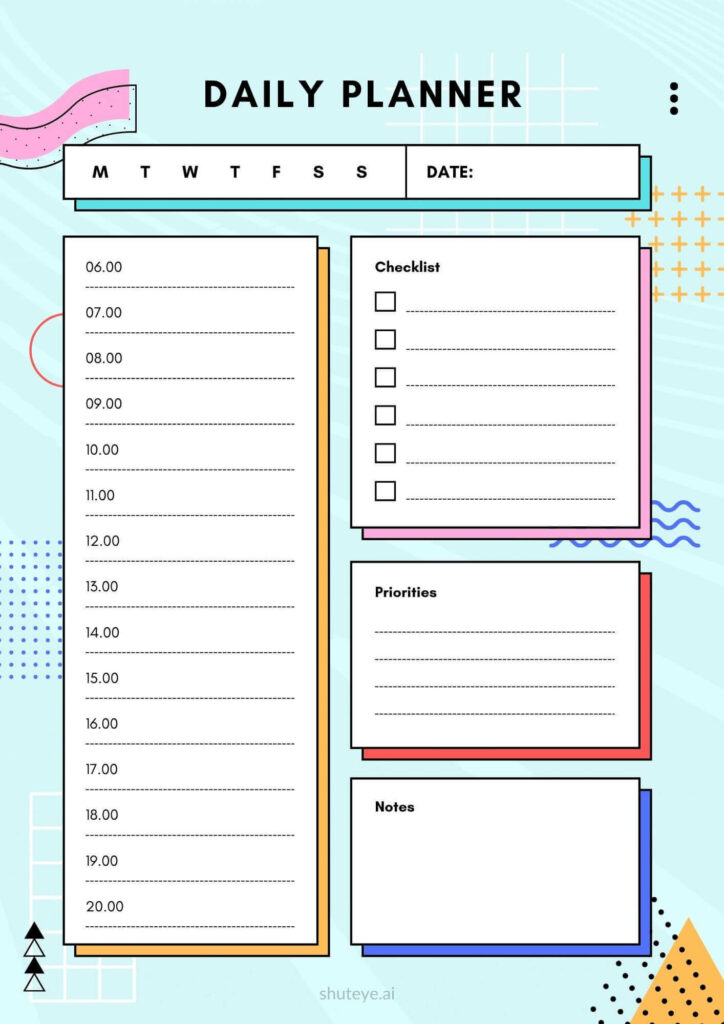
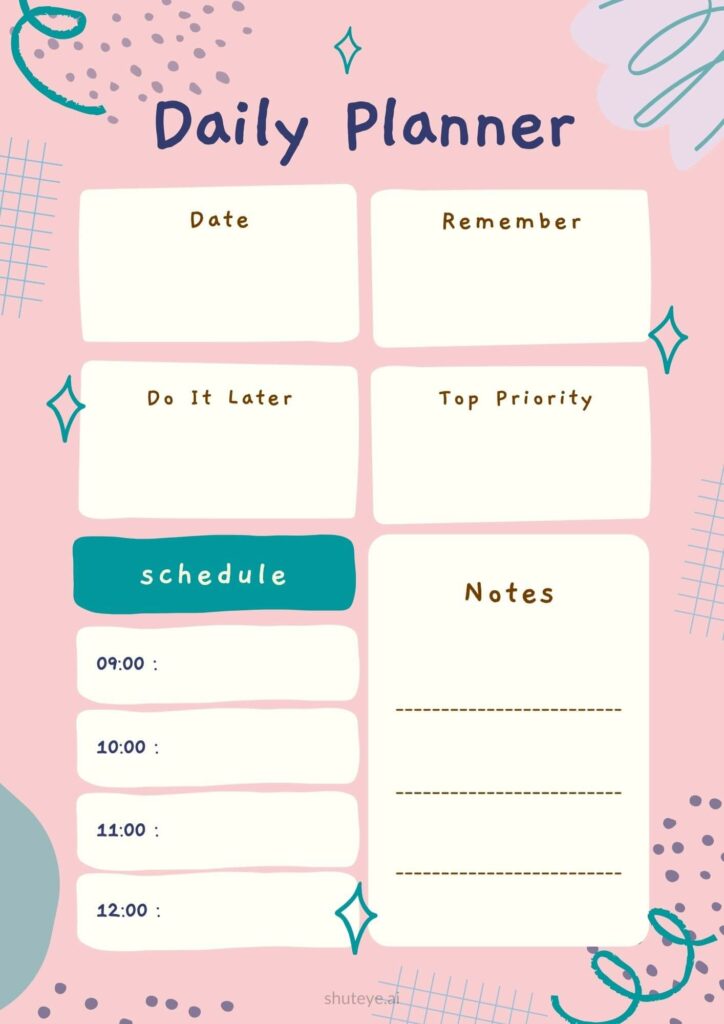
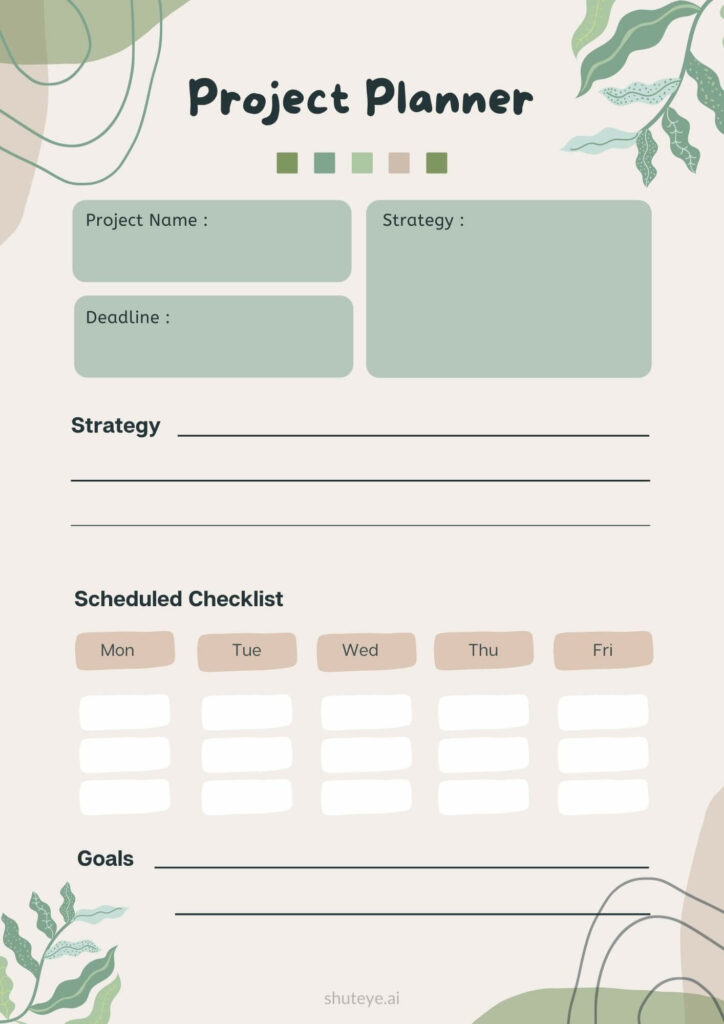
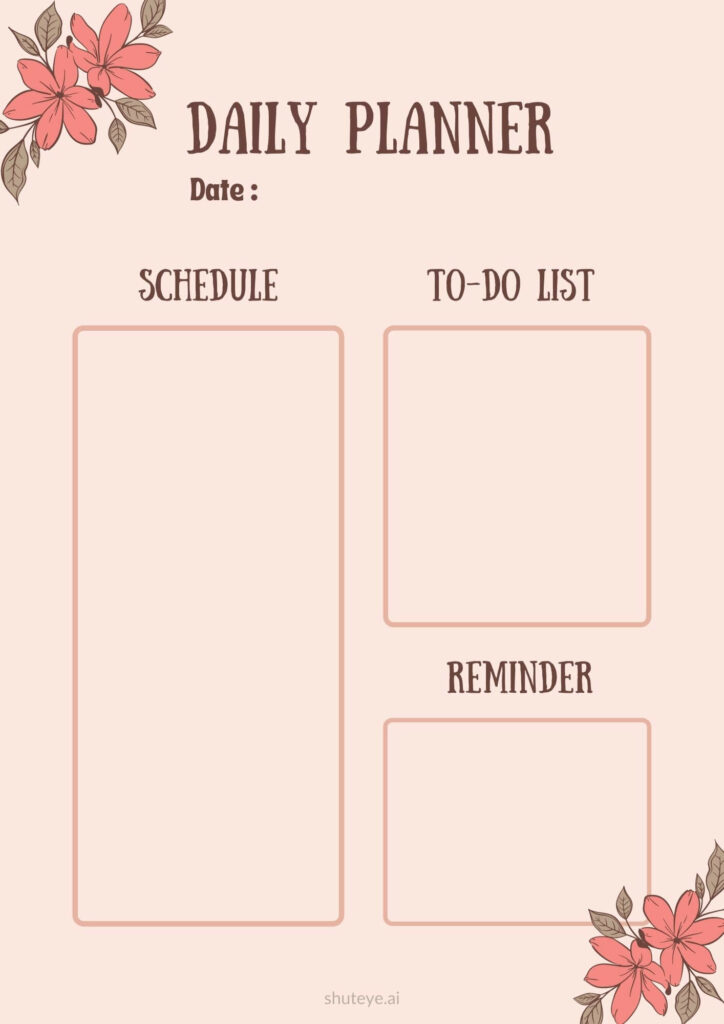
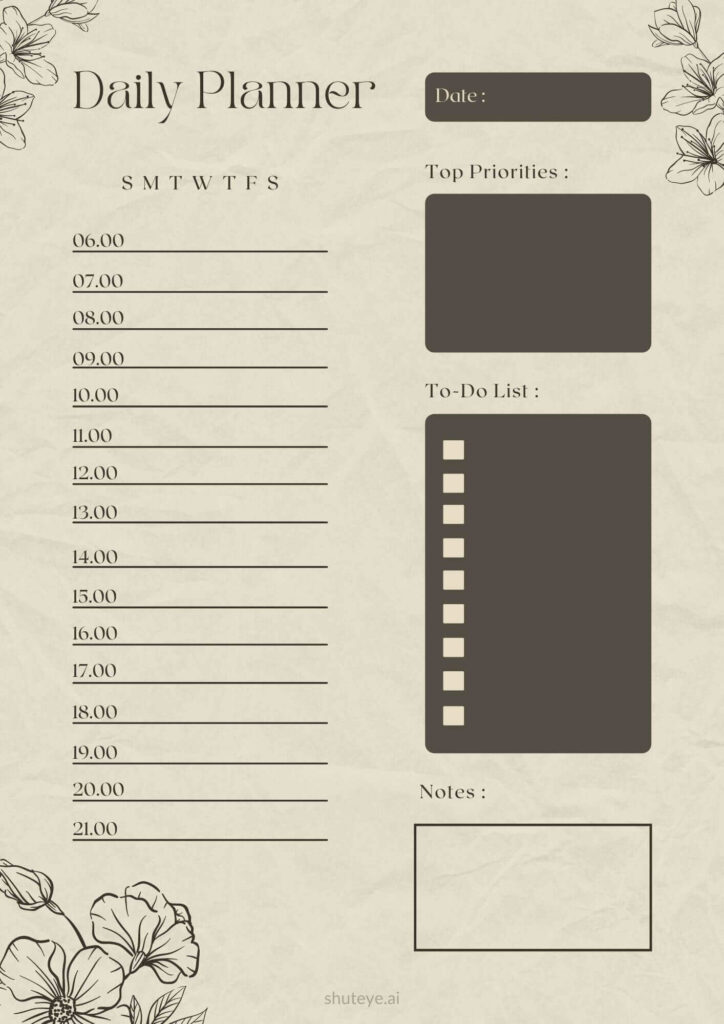
How To Use a Daily Planner For Work?
Just keep in mind that planning is a method. It’s possible that the way you start your planner will differ from how you complete it. You’ll make adjustments and changes as you go to improve your efficiency and effectiveness.
Planning is a dynamic process that evolves as you do. So develop a plan and be willing to change it to improve it.
- Every morning or evening, set aside 10 minutes to plan out your day. Turn off your phone and computer while you plan your day. For the day, make a list of all of your upcoming meetings, conference calls, email follow-ups, tasks, and projects.
- Start big and work your way down. Start with the monthly layout when recording data. Keep track of key dates, meetings, and other details. Then keep track of the data on a weekly basis, and finally assign the assignments to daily pages. Here’s some more detailed info on How to Use a Habit Tracker.
- Make use of time blocking. Once you’ve added a task to your daily to-do list, schedule the time it will take to finish it. It may be difficult to determine how much time is required for an activity at first, but the more you track it, the better you will grow at anticipating the appropriate length of time.
- Bring your planner to every meeting. You don’t have to write everything down word for word; simply make a list of the crucial details you’ll need to recall later.
- Make a spot in your planner for notes. This is an excellent area to keep track of objectives, initiatives, and meeting notes.
- Consider using colour coding. Everything should be written in black pen, with highlighters used to indicate particular chores or events that must be done. Put all meetings in yellow, for example. Conference calls are highlighted in green, emails or phone call follow-ups are highlighted in blue, and urgent activities are highlighted in red.
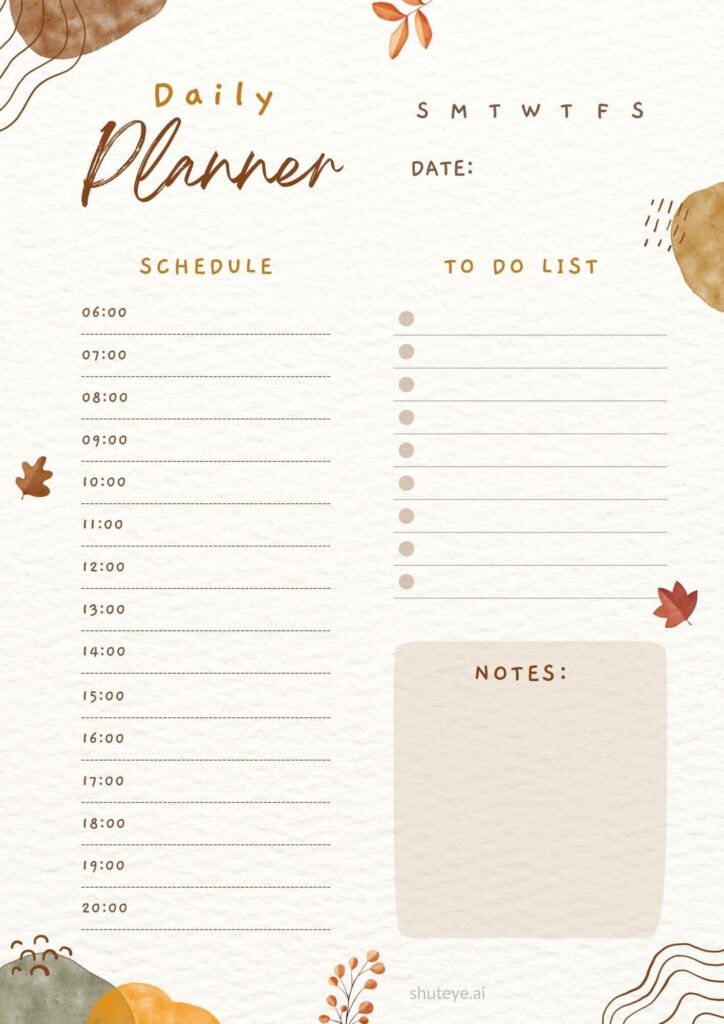
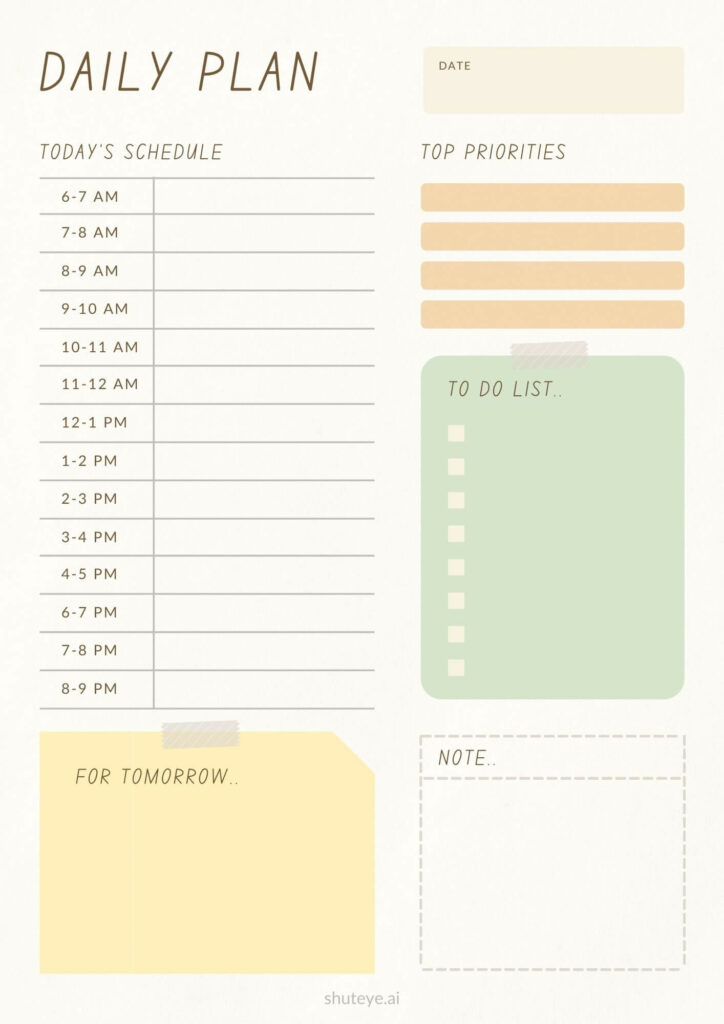
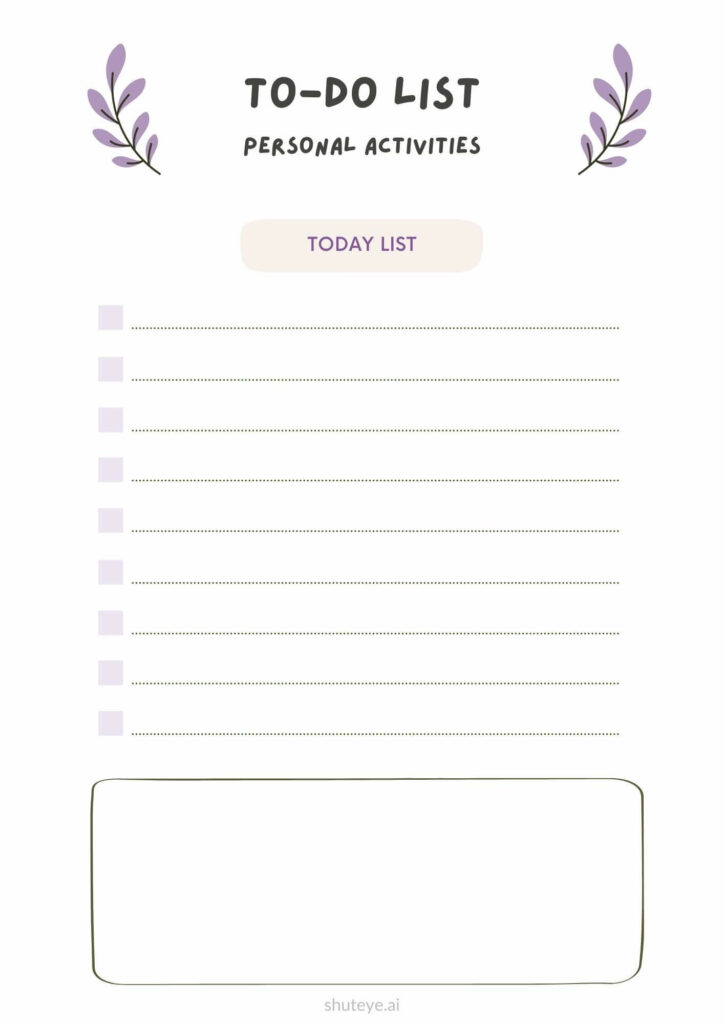
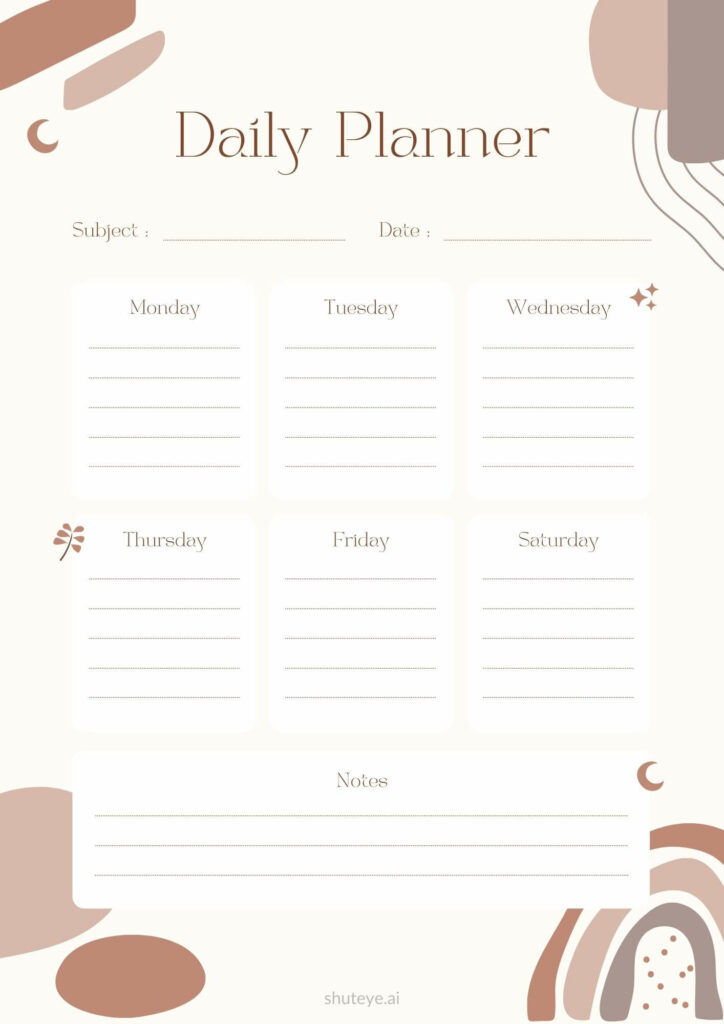
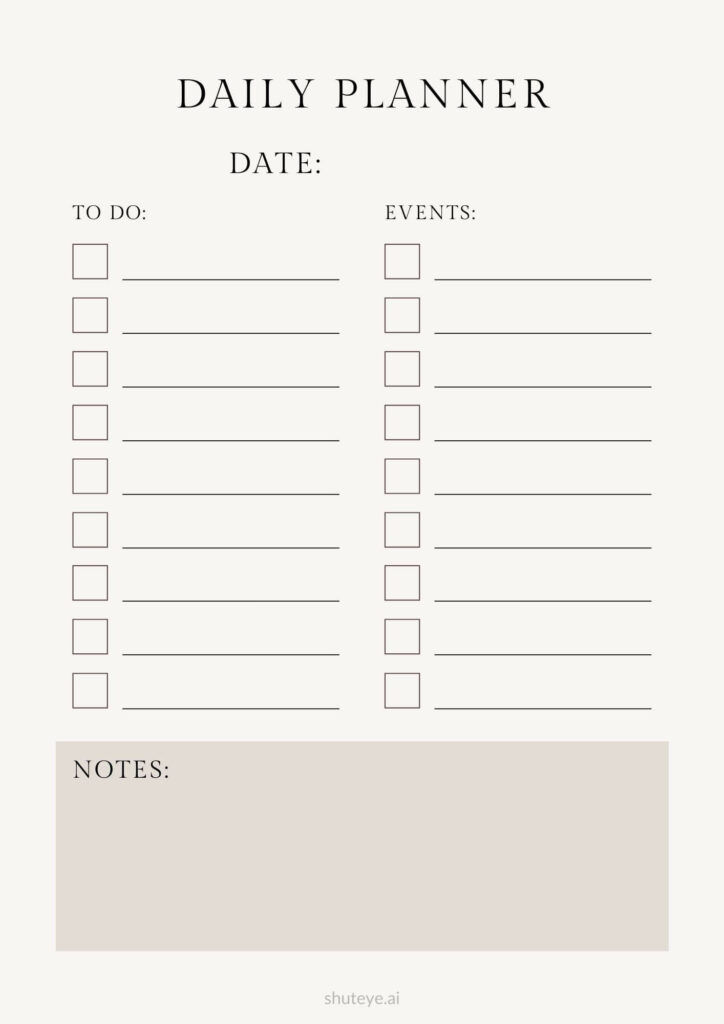
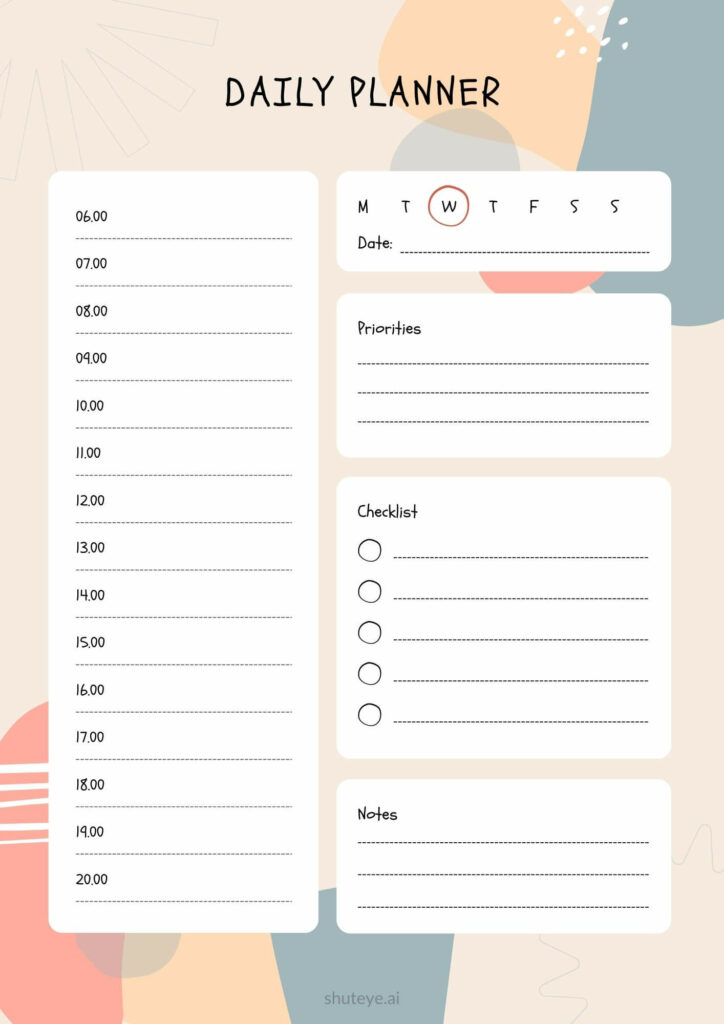
When it comes to arranging your day, consistency and flexibility should take precedence over perfection. While we’ve given you some pointers on how to manage your day properly, there’s no silver bullet. Instead, when we consistently show up, we feel the most prepared to take on the day. Days that are productive tend to turn into fruitful weeks, months, and years. There’s no limit to what you can achieve when you work on your responsibilities with intention and focus day after day.


